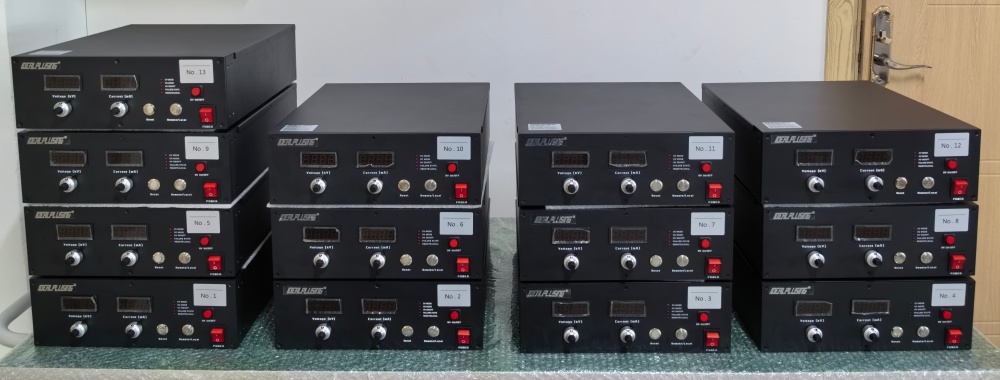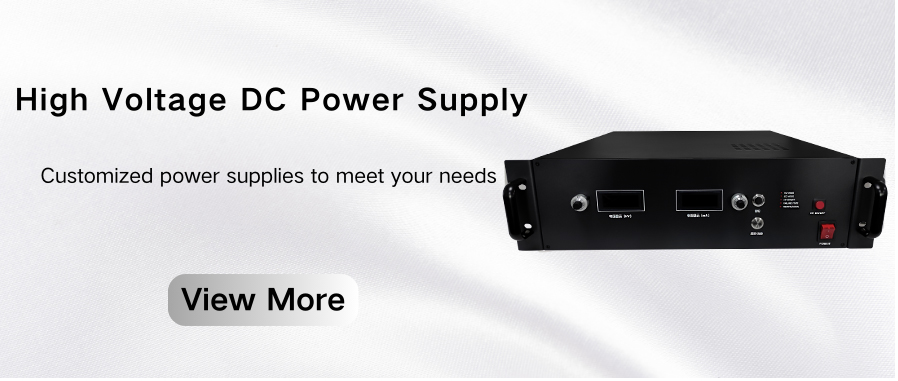Amidst the global energy transition, photovoltaic power generation, as a core technology for renewable energy, places stringent demands on high-voltage DC power supplies (HVDCs) for system efficiency and stability. With their high voltage ratings, wide dynamic response, and intelligent control capabilities, HVDCs are key enablers for photovoltaic systems, from power generation to grid connection. This article analyzes the core value of HVDCs in photovoltaic power generation from three perspectives: technical architecture, application scenarios, and cutting-edge trends.
Technical Characteristics of HVDC Power Supplies in Photovoltaic System Architecture
Improving the efficiency and cost optimization of photovoltaic power generation systems relies heavily on three technological breakthroughs in HVDC power supplies:
1. Wide Dynamic Range and High-Precision Control
HVDCs must accommodate wide fluctuations in photovoltaic panel output voltage (for example, the voltage range in a 1500V system can reach 200-1500V), while achieving ±0.1% voltage regulation accuracy through MPPT (maximum power point tracking) algorithms. Taking a phase-shifted series architecture as an example, multi-module phase-shift control can increase system efficiency to over 98% and reduce the size of passive filter components by 30%.
2. High Reliability and Insulation Design
For high voltages of 1500V and above, the power supply utilizes nanocomposite insulation materials (such as SiO₂/epoxy resin) to increase volume resistivity to 10¹⁴Ω·cm. Three-dimensional stacked packaging technology reduces creepage distance to 60% of traditional solutions. In humid environments, the IP67 protection rating and nano-coating process ensure leakage current is less than 10μA, meeting the IEC 62109-1 safety standard.
3. High Frequency and Optimized Energy Efficiency
The use of silicon carbide (SiC) devices significantly improves power supply performance: Inverters using 1200V SiC MOSFETs increase conversion efficiency from 98.8% of silicon-based devices to over 99%, reducing energy losses by 8%. Furthermore, increasing the switching frequency to 50kHz reduces the size of magnetic components by 40%.
Typical Application Scenarios and Project Value
The application of high-voltage DC power supplies in photovoltaic systems spans the entire process of power generation, energy storage, and grid connection:
1. HVDC Convergence in Centralized PV Power Plants
In GW-scale PV power plants, HVDC power supplies utilize a series-connected architecture to aggregate the voltages of multiple strings. For example, the Qinghai Qingyu DC Phase II 900,000-kW PV project uses a 1500V HVDC bus, combined with phase-shifted series connection technology, to reduce DC-side losses to below 1.5%. Fiber-optic synchronous triggering technology achieves inter-module synchronization accuracy of ±1ns, ensuring grid-connected harmonic distortion (THD) of less than 3%.
2. Intelligent Control of Distributed PV Systems
In the Jinzhai County Distributed New Energy DC Cluster Demonstration Project in Anhui Province, a high-voltage DC power supply integrates 428kW of photovoltaic power, 150kWh of energy storage, and 60kW of charging stations into an AC/DC hybrid microgrid. Using a three-level control strategy (local, cluster, and inter-cluster), dynamic power allocation between substations is achieved, increasing photovoltaic power generation utilization by 6% and reducing line losses within the substation by 25%.
3. High-Voltage Direct-Mount Energy Storage System Technology
High-voltage direct-mount energy storage systems connect directly to the grid at 35kV, eliminating the boosting step required by traditional energy storage. A 100MW agricultural photovoltaic hybrid project employs this technology, achieving a 90% energy storage system cycle efficiency. Adaptive SOC balancing technology improves inter-cluster consistency to 98%, while also supporting dynamic removal of 15% of battery clusters without impacting system operation.
Technical Challenges and Future Trends
Currently, high-voltage DC power supplies face three technical bottlenecks in photovoltaic applications:
1. High-Frequency Noise Suppression
Electromagnetic interference (EMI) in the frequency band above 10MHz must be mitigated through integrated magnetic component design and multi-stage LC filtering (e.g., common-mode inductors + differential-mode capacitors) to reduce conducted interference to less than 40dBμV (150kHz-30MHz), meeting CISPR 32 Class B standards.
2. Thermal Management Optimization
In high-power scenarios (single module > 5kW), microchannel liquid cooling (channel size 0.3mm) combined with phase change cooling can control junction temperature below 85°C while simultaneously achieving power density exceeding 20W/in³.
3. Intelligent Operation and Maintenance Upgrade
Integrated digital twin technology monitors partial discharge in real time (resolution ≤ 5pC) and uses AI algorithms to predict insulation degradation (with >95% accuracy), reducing maintenance costs by 30%.
Future technology evolution directions include:
Ultra-high voltage system adaptation: The application of 2000V DC systems will further reduce cable losses. Combined with wide-bandgap semiconductor devices, inverter efficiency can exceed 99.5%.
Multi-energy collaborative control: Integrating high-voltage DC, radio frequency, and pulsed magnetic field outputs supports plasma-thermal-mechanical multi-physics coupled processing, expanding its application in flexible electronics manufacturing. Integrated PV, Storage, and Charging: PV-first charging stations achieve seamless integration of PV, storage, and charging through a high-voltage DC bus. PV power supply can account for up to 80% of the total power supply, reducing grid reliance and lowering carbon emissions.
Conclusion
As the "energy hub" of photovoltaic power generation systems, technological innovations in high-voltage DC power supplies directly impact the efficiency and economic viability of renewable energy development. From high-voltage aggregation in centralized power plants to intelligent regulation in distributed systems, from efficient conversion of SiC devices to precise operation and maintenance through digital twins, high-voltage DC power supplies are driving the photovoltaic industry towards high reliability and flexibility. As the construction of new power systems deepens, high-voltage DC power supplies will play an even more central role in the Energy Internet, becoming a key technological enabler for achieving the "dual carbon" goals.
IDEALPLUISNG Power Expert:
We focus on the research and development, sales and services in the fields of DC-DC power modules, AC-DC rectifier modules, DC-AC inverters, AC power supplies, DC power supplies, LED power supplies, chargers, rectifier systems, etc., providing personalized, efficient, reliable and cost-effective power solutions for all walks of life.
Thank you for considering our services.







